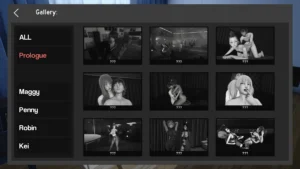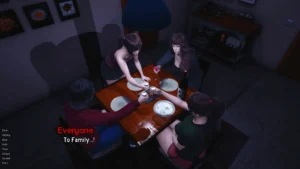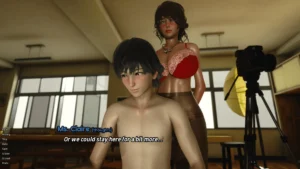
The Sin Within
Play The Sin Within
The Sin Within review
A Deep Dive into the Game’s Themes and Mechanics
In the world of interactive storytelling, ‘The Sin Within’ stands out as a game that delves into complex themes and moral dilemmas. This article will explore the game’s narrative, mechanics, and how it challenges players to confront their own moral compass.
Understanding the Game’s Narrative
What Drives the Story?
Picture this: You’re sneaking through rain-lashed streets, evidence of a crime burning in your pocket, when guards corner a homeless woman who helped you. Do you intervene and risk capture? Or slip away silently? 😓 That’s The Sin Within gameplay in a nutshell—a heart-pounding story fueled by your decisions. Unlike many narrative-driven games, it doesn’t just hand you a plot; it makes you build it through tension-filled moments.
I still remember my first playthrough: I hesitated during a hostage situation, assuming I’d get a “redo.” Nope! 💥 The game autosaved instantly, locking in my cowardice. That’s when I realized—this isn’t a movie. You’re the director, scriptwriter, and lead actor. The plot advances through organic triggers, like overheard conversations or hidden letters, rather than cutscenes. Miss a clue? The story adapts, leaving gaps that haunt you later. 😨
Pro Tip: Talk to every NPC twice. Early dialogue hints at future dilemmas—like a vendor’s “harmless” gossip that later exposes a traitor.
Exploring Moral Ambiguity
Forget “good vs. evil” meters. The Sin Within thrives in murky gray zones where every “right” choice has rotten consequences. 🕵️♂️ One mission had me choosing between exposing a corrupt doctor (hurting his patients’ access to care) or staying silent (letting him experiment on the poor). Neither felt heroic—both left me staring at the pause screen for 10 minutes! 😤
These moral themes in games mirror real-world ethics. Is stealing medicine for an orphanage justified if you ruin the inventor’s livelihood? The game never judges you. Instead, it shows how characters remember your actions. Help a thief escape, and he’ll later offer you a lockpick. Betray him? Prepare for an ambush in Act 3. 🔄
My biggest takeaway? Intentions don’t erase outcomes. In a playthrough, I funded a shelter by sabotaging a rival business—only to cause layoffs that sparked street riots. Oops. 🙈
Player Choice and Consequences
Here’s where The Sin Within gameplay shines: Your smallest actions spiral into avalanches. 🏔️ Early on, I ignored a beggar’s plea for coins. Three chapters later, he recognized me and refused to share a critical alley shortcut. This player choice and consequences system means no two playthroughs feel identical. Relationships shift, allies turn hostile, and endings branch wildly based on hidden “karma” points.
Let’s break down a pivotal example:
In Chapter 4, you find a ledger proving a beloved priest’s embezzlement.
– Expose him publicly: The church shuns you, losing access to safe zones.
– Blackmail him: He becomes a reluctant informant but sics assassins on you.
– Burn the evidence: The orphanage he funded collapses, triggering a side-quest rebellion.
| Your Decision | Ripple Effect |
|---|---|
| Spare a rival spy | They rescue you from jail in Act 5 |
| Accept a bribe | Guards become corrupt, increasing patrols |
| Share supplies with refugees | Gain allies who aid in boss fights |
This interactive storytelling approach makes endings deeply personal. My “redemption” ending (where my character opened a clinic) only triggered because I helped 15+ NPCs and refused lethal force. 😌 Replay value? Massive. Four playthroughs in, I’m still finding new twists.
Strategy Note: Keep a journal. Note names, favors owed, and grudges—it’ll save you from surprise betrayals! 🔍
The Sin Within proves narrative-driven games can be more than just pretty scripts. By forcing you to live with ugly compromises and celebrating subtle moral themes in games, it turns storytelling into a mirror for your own ethics. 🪙 So… what sins will you carry?
In conclusion, ‘The Sin Within’ offers a thought-provoking experience that challenges players to navigate complex moral landscapes. By exploring its narrative and mechanics, players can gain a deeper understanding of the game’s themes and how they reflect broader societal issues.
























